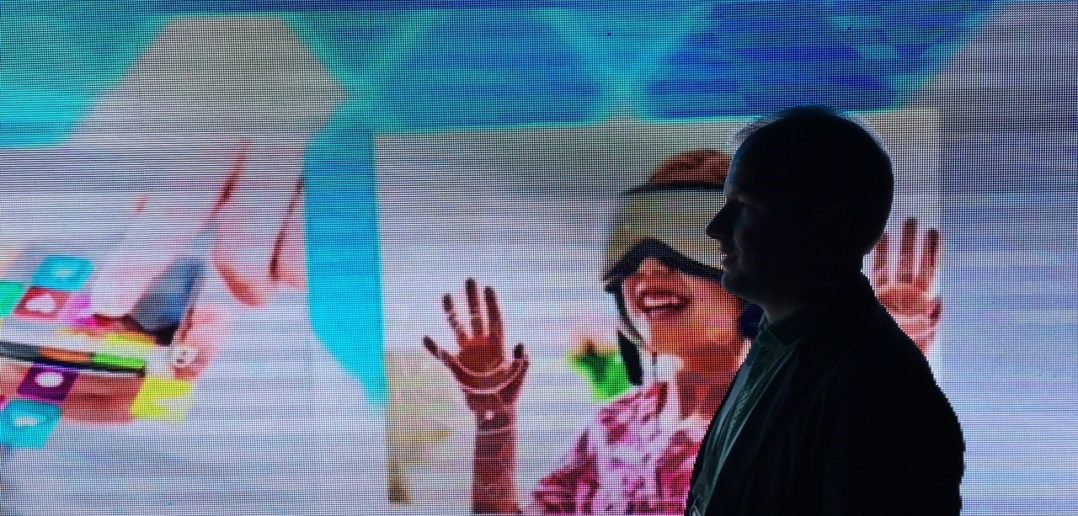This is the latest in a series of posts from leading VR and AR influencers in the run-up to MIPTV 2017. The posts are coordinated by VAST MEDIA, a Berlin-based media consultancy.
Media’s shift into multiplatform delivery streams is well-established; the new frontier for the broadcast industry is now virtual reality, augmented reality and other forms of interactivity. It is here that the future of the industry will play out.
Today, video is weaved into the fabric of our everyday lives. It is no longer a discrete entity with an allocated time, place, and platform. It is everywhere. Today, films, documentaries, news, TV series, and other sorts of content is available on numerous platforms and channels. Information exchange about events that exist only on screen has become an essential part of the attention industry: swiping, liking, sharing, and commenting. Some call it post-TV; but this term is insufficient to describe on a macro level how people divide their time and attention between the myriad information streams their minds are now subject to.
VR is today still in its early days. It is being shaped by enthusiasts. It is comparable to the status of films before the cinema as a physical location was invented, and films were instead shown in variety theatres. But a key difference is that VR has happened so far during a period of rapid technological change, in which it is very likely to reach maturity as an industry and an art form far more quickly than cinema ever did. The rate of progress has been faster than the internet, or even the explosion of the smartphone; it is an innovation standing on the shoulders of other innovations that in their day were game-changing. Though it is not certain where the evolution of VR and AR will lead, we see stunning examples of experiments and technical innovation that enables audiences to experience increasingly immersive stories. Compared to just a few years ago, when ARTE published Polar Sea 360°, the progress has been amazing. Since then, we have seen the rise of multiple platforms, the integration of 360 and VR in existing ecosystems, and its use spreading into many different kinds of industries.
This creates, beside the development of verticals, potential business models, and the creation of content, a need for deeper study. We need to understand what that medium is doing to the user, and where the challenges and the limits are. VR ethics and studies in neuroscience need to be taken into account as the industry evolves from unfettered creativity into something altogether more formalised. And that is why content creation also needs to take in account what this tech does differently to other existing media. Rhizomat VR – soon available in the ARTE360-app – and the coming up Alteration from OKIO Studio are two examples of that process of self-reflection. Technology encourages innovation and creativity. And the opportunities the tech has to offer will only grow as its use increases. 5G is around the corner, everybody can already carry a Terabyte in their pockets, and a 1Gbit/s connection in some households is already a reality. But that is not all.
Previous innovations inspire us to imagine what else might be just around the corner. The Lumière Brothers did not only show the famous train entering a station. They also tried to show panoramic projections to better immerse the audience. They were already thinking in ways that we label today as field of view, empathy and presence. But while they did not succeed with the first hand, panoramic experience (mainly because of a faulty business model), they did write the first pages of the history of cinema. And the cinema screen itself has grown over time to increase the sense of immersion, although its expansion has taken many decades. It was the famous French film critic André Bazin who, in the fifties, inspired the Nouvelle Vague with the words: “Cinema has not been invented yet.” Would André Bazin say the same of VR and AR today, as TV and cinema reinvent themselves? I believe he would encourage progress to continue and inspire a new New Wave of innovative creators.
Today we experience how technology blends different types of media for a unique result, that each time is more than just the sum of its parts, but a different experience altogether. Different functionalities are mixed with different types content. A video may blend real images with computer generated, adding functionalities like comments, likes, shares and with VR and AR a high degree of interactivity by nature. Story is code and code is story. Content no longer fits into easily identifiable categories. The advent of VR and AR will accelerate this change so that the content we consume in the future will be a seamless experience, not only an endless stream of data experienced from platform to platform, but also a seamless combination of the ways in which we currently consume content. The blended content that these technologies will develop for us will shape what we will watch, listen, and perhaps, even feel in the future. The potential sociological and artistic ramifications are immense.




